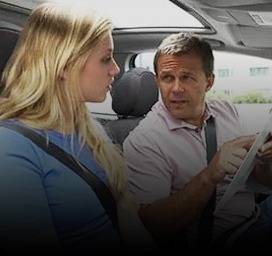1. Introduction
Driving is a skill that goes beyond being a personal convenience; it is a societal responsibility. The introduction sets the stage for a profound exploration of the evolution of driving schools in Melbourne. At its core, this section emphasizes the critical role driving schools play in shaping the behaviors and skills of individuals behind the wheel. It delves into the broader context of road safety and how driving education acts as a linchpin in reducing accidents, minimizing road-related fatalities, and fostering a culture of responsible driving.
In the introduction, we reflect on the historical and contemporary significance of driving schools. From their humble beginnings to becoming an integral part of our societal structure, driving schools have evolved in response to the changing dynamics of transportation, urbanization, and technology. The section aims to capture the reader’s attention, conveying the importance of understanding the journey driving schools have undertaken to reach their current status.
It explores the multifaceted nature of driving education, not just as a means to obtain a license but as a comprehensive system that contributes to the safety and well-being of the community. As we embark on this journey through Melbourne’s driving school landscape, we invite readers to contemplate their own experiences with driving education and recognize its broader implications on public safety.
2. Early Days: The Emergence of Driving Education
The second section takes us back in time, unraveling the early days of driving education. We delve into the origins of formal driving instruction, tracing its roots to a time when automobiles were a novel invention, and road regulations were in their infancy. This historical perspective provides a foundation for understanding the gradual development of driving schools and the societal changes that necessitated their existence.
At the outset, driving education was rudimentary, often relying on personal experience and trial and error. As the number of vehicles on the road increased, so did the need for a more structured approach to teach individuals how to operate these machines safely. The section explores how early driving schools emerged to meet this demand, shaping the curriculum based on evolving traffic laws and safety considerations.
We examine key milestones in the evolution of driving education, from the introduction of basic driving rules to the establishment of standardized testing procedures. The section highlights the pioneers and visionaries who played a pivotal role in shaping the early landscape of driving schools. It also addresses societal attitudes towards driving during these formative years, illustrating how perceptions of driving education have transformed over time.
3. Modernizing Driver Training
The evolution of driver training has been shaped by advancements in teaching methodologies and technological innovations. This section delves into the transformative changes that have occurred in recent decades within the realm of driving education.
One aspect of modernization lies in the adoption of advanced teaching methods. Driving schools have moved beyond traditional instruction, incorporating interactive and personalized learning approaches. Simulators, interactive modules, and adaptive teaching techniques have revolutionized how driving skills are imparted, catering to different learning styles and enhancing the overall effectiveness of driver training programs.
Moreover, technology has played a pivotal role in reshaping driver education. From the integration of in-car technologies to the utilization of online platforms for theoretical learning, driving schools have embraced technological advancements to provide a more comprehensive and engaging learning experience. This includes virtual reality simulations, real-time feedback mechanisms, and digital resources that supplement classroom and practical lessons.
The section also discusses the impact of these modernization efforts on learner outcomes, highlighting how these advancements have contributed to producing safer and more proficient drivers. Additionally, it touches upon the challenges and adaptations driving schools have faced in embracing these changes, illustrating the dynamic nature of modern driver training.
4. The Driving School Landscape in Melbourne
Melbourne boasts a diverse landscape of driving schools, each offering unique programs, specialties, and approaches to driver education. This section provides an in-depth overview of the driving school ecosystem within the Melbourne area.
It explores the various types of driving schools available, including traditional brick-and-mortar institutions, online driving programs, specialized training centers, and those catering to specific demographics or driving needs (e.g., nervous drivers, senior citizens, or commercial vehicle training).
Furthermore, the section delves into the distinguishing features of these schools, such as their teaching methodologies, accreditation, instructor qualifications, and facilities. It examines how driving schools in Melbourne cater to the multicultural and diverse population of the city, providing services in multiple languages and accommodating various learning preferences.
The discussion also encompasses the geographical spread of driving schools in Melbourne, considering accessibility and convenience for learners across different neighborhoods. By providing an extensive snapshot of the driving school landscape, this section equips readers with insights to navigate and select from the array of available options based on their individual preferences and needs.
5. Challenges and Solutions
In navigating the roads towards safer driving, driving schools in Melbourne encounter various challenges. This section delves into the multifaceted obstacles they face and the innovative solutions devised to address these issues.
One significant challenge revolves around road safety concerns, including the rise in traffic accidents, changing traffic patterns, and urban complexities. Driving schools must adapt their curricula and teaching methodologies to equip learners with the skills to navigate these challenges effectively.
Moreover, the section discusses how driving schools tackle issues like distracted driving, impaired driving, and the integration of emerging technologies into vehicles. It examines the proactive measures taken by these institutions, including advocacy for stricter regulations, awareness campaigns, and integrating cutting-edge safety features into their training programs.
The urban landscape poses unique challenges, such as congested roads, diverse traffic environments, and evolving infrastructure. Driving schools in Melbourne implement strategies to prepare learners for urban driving scenarios, emphasizing defensive driving techniques, situational awareness, and navigating complex traffic conditions.
Furthermore, this section explores collaborative efforts between driving schools, local authorities, and community organizations in developing comprehensive solutions to enhance road safety. These initiatives range from educational programs in schools to community outreach events aimed at promoting responsible driving behavior.
6. The Role of Driving Schools in Safer Roads
Driving schools play a pivotal role in shaping safer roads by not only imparting driving skills but also instilling a culture of responsible driving. This section delves deeper into the multifaceted contributions of driving schools towards creating a safer driving environment.
It examines the influence of driving school policies and regulations on shaping road safety standards. These institutions adhere to established guidelines, ensuring that their programs meet or exceed safety benchmarks. Additionally, driving schools actively engage with regulatory bodies to advocate for improved safety measures and curriculum enhancements.
Community engagement forms a crucial aspect of driving schools’ efforts towards safer roads. They organize awareness campaigns, workshops, and seminars aimed at promoting responsible driving behaviors among learners and the broader community. These initiatives foster a sense of social responsibility and encourage a collective effort towards safer roads.
7. Choosing the Right Driving School
Selecting a driving school is a pivotal decision for any aspiring driver. This section offers comprehensive guidance on factors to consider when choosing the most suitable driving school in Melbourne.
Proximity and accessibility play a significant role in the decision-making process. Readers are guided through assessing the location of driving schools concerning their residence or workplace. Factors such as ease of access, transportation options, and scheduling flexibility are explored to ensure convenience for learners.
The section emphasizes evaluating the curriculum and teaching methods offered by driving schools. This involves assessing the comprehensiveness of the program, the inclusion of defensive driving techniques, and the balance between theoretical and practical lessons. Additionally, the qualifications and experience of instructors, along with student-to-instructor ratios, are highlighted as crucial considerations.
Other aspects, such as the availability of different vehicle types for training, the quality of learning facilities (including simulators and practice areas), and the overall reputation and accreditation of the driving school, are meticulously discussed. The goal is to equip readers with the tools to make an informed decision aligning with their specific learning needs and preferences.
8. Future Trends and Innovations
This section peers into the crystal ball of driving education, exploring the anticipated trends and innovations poised to shape the future of driving schools in Melbourne.
Technological integration remains at the forefront, with the continued advancement of in-car technologies, augmented reality applications, and sophisticated simulators. These advancements aim to enhance the learning experience, providing more immersive and interactive training environments for learners.
Educational reforms are also anticipated, with a focus on adaptive learning models that cater to individual learner capabilities. Customized learning paths and personalized instruction, enabled by artificial intelligence and machine learning, are predicted to become standard practices in driving education.
The discussion extends to the potential influence of electric and autonomous vehicles on driving education. As the automotive landscape evolves, driving schools must adapt their curriculum to educate learners about the nuances of new vehicle technologies, including electric and self-driving cars.
9. Conclusion
The concluding section encapsulates the essence of Melbourne’s driving school evolution and its profound impact on fostering safer roads. It serves as a synthesis of the insights gained throughout the blog, offering a comprehensive overview of the journey driving schools have undertaken and their pivotal role in the broader context of road safety.
Melbourne’s progress towards safer roads is underscored, emphasizing how driving schools have been instrumental in shaping competent, responsible drivers. The section revisits key themes, such as the historical evolution of driving education, modernization efforts, challenges faced, and innovative solutions implemented by driving schools.
It emphasizes the collective responsibility driving schools bear in nurturing a culture of safety and responsibility among drivers. Through meticulous curriculum design, implementation of safety protocols, community engagement, and continuous adaptation to emerging trends, driving schools contribute significantly to mitigating road risks.
Moreover, the conclusion underscores the ongoing nature of this journey, acknowledging that the evolution of driving education is a dynamic process. It stresses the need for driving schools to remain adaptive and proactive in embracing future advancements, innovations, and societal changes to continue fostering safer roads.
The section ends by inviting readers to reflect on the critical role driving schools play in shaping the behaviors and attitudes of drivers, thereby contributing to the collective goal of creating safer roadways in Melbourne and beyond.







